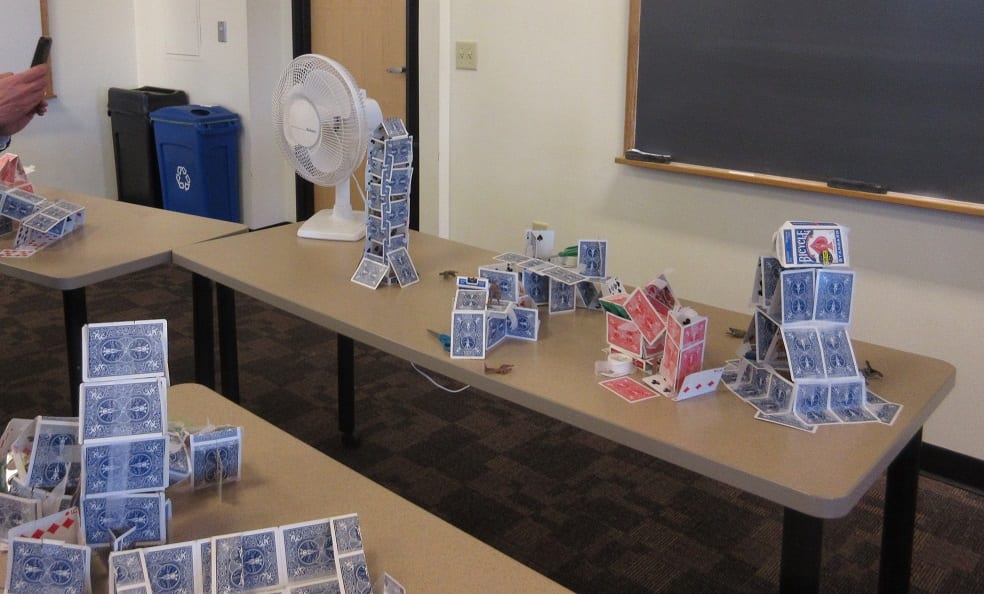Recent Articles
How Liz Ryder uses active learning on the first day of “Exploring Bioinformatics”

BCB 100X / BB 100X Exploring Bioinformatics and Computational Biology meets twice a week for 2 hours each session. It has a mixed population of about 30 students. Some are BCB freshmen, who are taking the class for their major, and tend to have recent high school biology background and little computer science background. The […]
A Lesson about Asking Questions from Zoe Reidinger in Biomedical Engineering

In Biomedical Engineering Design (BME 3300) our students work in small teams to solve a real world problem in a medical/healthcare field over the course of the term. The project for this term is to design, build, and test a portable incubator that is capable of culturing bacterial samples, without access to electricity, in the […]
Student Perspectives on Active Learning
Check out this video created by WPI undergraduates who want to encourage more faculty to break up lectures with active learning opportunities.
Increasing student response rate and participation while working on your throwing arm

Have you ever asked a question in class and then stood by while you got that glazed look from a room full of students? Depending on your level of comfort and experience you can of course just wait them out and eventually someone will respond. This does take patience on occasion and waiting for what […]
Use of Think-Pair-Share and Problem Solving in Biomechanics

Professor Kris Billiar, Department Head in Biomedical Engineering, gives some specific examples of activities he uses in class and how he’s improved their effectiveness over the years.
Natalie Farny’s Use of Daily Minute Papers to Engage Students and Quickly Gauge Understanding

I use a twist on the typical think-pair-share exercise coupled with the minute paper exercise in my 3000-level Human Anatomy and Physiology course (~60-80 students). At the start of each lecture, I put up a short open response question that relates to the material from the previous class and ask the students to spend 1-2 […]
Active Learning Examples from Steve Kmiotek in Chemical Engineering

In an introductory chemical engineering class, I wanted to convey a visual representation of the conservation of mass in different unit operations under different conditions, including steady state, non-steady-state, separation systems, recycle streams, and concepts of concentration. To do this, I had several student volunteers serve as unit operations, processing some red and some yellow […]
Multiple Techniques from Rob Traver for Fostering Participation and Thinking in Class

Writing on index cards. To increase student engagement I sometimes distribute index cards (an electronic version will do) and ask students to write a reply to a question I ask, or to a comment a fellow student poses, or to something they are reading or examining (a chart) BEFORE I continue with the classroom discussion. […]
Stepping Up the Participation Level in In-Class Activities

I have used a variety of think-pair-share and similar activities in my introductory materials course (ES 2001), with a typical enrollment of 120 in recent years. My main goal is to have each student practice applying principles during class and leverage the power of peer instruction. In addition, I can see how well they’re understanding […]
Nancy Burnham’s Use of Pre-Lecture Quizzes and Mid-Lecture Breaks in Physics

I give pre-lecture quizzes at the beginning of class. A few questions based on previous content helps the students settle into the material for the day and motivates them to keep on top of new content. Then, once or twice during the lecture, I’ll stop to change the pace. The question(s) usually address the more […]
